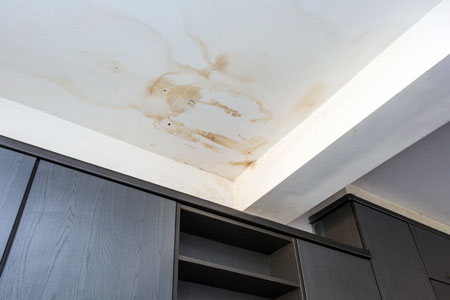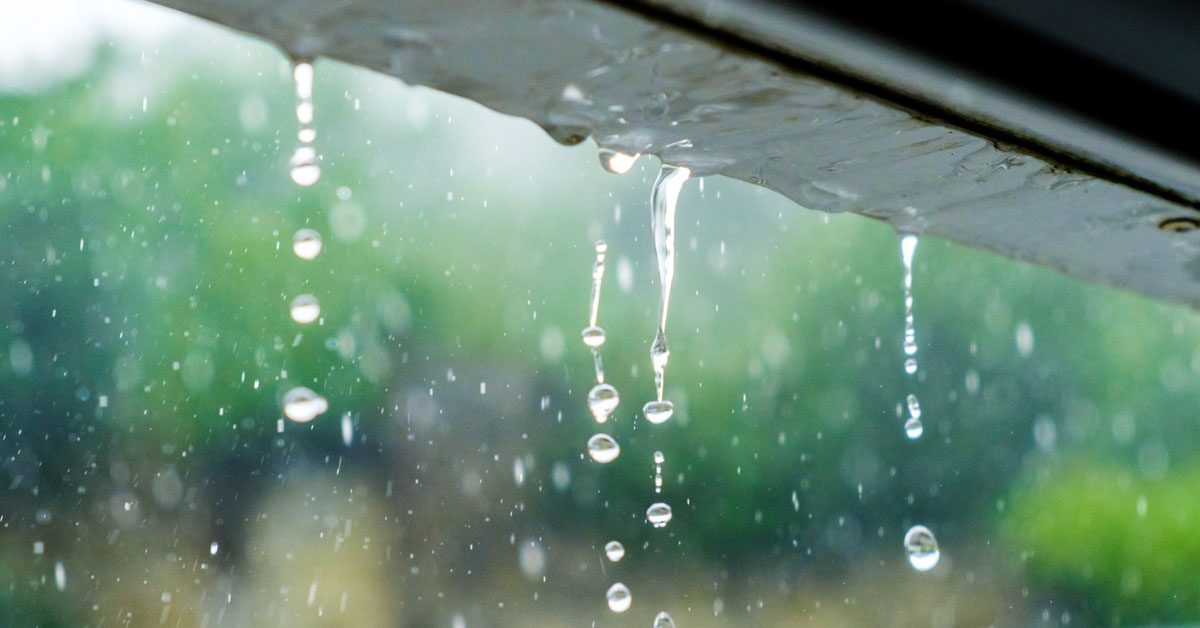What is Roof Flashing?
Roof flashing is essential in keeping your roof sealed to avoid leaks. Typically made of galvanized steel, contractors install it around features of the roof where water would be likely to enter the home. Such features might include the chimney, where sections of the roof intersect, ventilation fans, pipes, skylights, and the perimeter of the roof. The flashing works as a sealant, giving these areas of the roof needed protection, and directing the flow of water away from certain areas to prevent water damage and leaking.
Different Types of Flashing
There are many areas of the roof that require flashing to ensure no water leaks into the home or attic space. Some of these types of flashing include:
Saddle Flashing
Saddle flashings are pieces used to cover joists or balustrade-to-wall junctions.
Continuous Flashing
Also referred to as “apron flashing,” continuous flashing is a long, single piece of flashing that protects the joint between a vertical wall and a sloped roof.
Base Flashing
Base flashing is the bottom piece of flashing used at the joint between the roof and a vertical surface, such as a wall or the chimney.
Counter Flashing
Counter flashing, or “cap” flashing, is also used where a vertical surface protrudes from the roof. It is placed perpendicular to the base flashing along the verticle surface, sometimes sitting under the shingles directly against the mortar.
Step Flashing
These flashing pieces are shaped like right angles and are used to protect the areas where the roof meets a wall or the chimney. Multiple pieces of step flashing are applied in layers with shingles to keep water away from the walls.
Valley Flashing
Valley flashing is placed in the valleys where two planes of the roof intersect.
Drip Edges
Drip edges are a particular type of flashing installed under the roof felt along the eaves and over the roofing felt along rakes. The drip edges prevent water that drips off the side of the roof from leaking into the home.
Skylight Flashing
Some skylights come with a kit that includes flashing. However, if the kit is not included, there are various methods and types of flashing that a roofing contractor can use to ensure the skylight doesn’t leak.
Kick-out Flashing
Sometimes referred to as “diverter” flashing, kick-out flashing directs water away from the cladding and into the gutter.
Vent Pipe Flashing
Vent pipe flashing is precisely what the name sounds like, flashing for pipes or vents that protrude out of the roof. These specialized flashing pieces consist of a flat surface that fits under the roofing shingles with a cone-like shape that sticks up and fits around the pipe.
Flashing Materials
Though typically made of galvanized steel, flashing can also come in a variety of different materials:
- Stainless Steel
- Zinc Alloy
- Lead
- Aluminum
- Copper
- Plastic
- Rubber
- Bituminous sheet material
Flashing that is exposed to the elements is typically made of aluminum, copper, steel, zinc, or lead. While concealed flashing is sometimes made from sheet metals, plastics, rubber, and bituminous-coated fabrics. Copper is often the best material to use for flashing because of its malleability, strength, and long lifespan. However, it tends to get passed up for less expensive materials that blend in better with the color of the roofing.
Flashing Leaks
Roof leaks are most often associated with flashing issues. If not installed correctly by a professional, rainwater and melting snow can leak into the home and attic space. Flashing leaks can also occur even if the flashing was initially in good condition and installed correctly. Over time, flashing becomes damaged from inclement weather and storms. High winds pull the flashing away from the roof, exposing the underlying structure.
Areas like the pacific northwest with excessive rain or snow will often cause flashing to erode faster than regions with dryer climates. When the flashing becomes damaged, water can easily leak through the roof and into the attic space or walls of the home. Over time, if the issue is left unaddressed, your home can sustain severe water damage, and mold can start to grow from the moisture.
How to Prevent Flashing Leaks
The best way to ensure your roof doesn’t start to leak is to have it checked regularly by a roofing contractor. In the northwest, the best time to have your roof inspected is before and after the rainy winter season. A roofing professional can safely inspect your roof with the right tools and equipment. They know what to look out for and will be able to efficiently repair any areas that show signs of corrosion, damage, or deterioration.
Small holes or areas that have deteriorated from corrosion can be patched with roofing cement and a small piece of flashing to fit over the hole. However, if the flashing is damaged beyond repair, it will need to be replaced entirely to prevent further leaking. If it looks like the seal around the flashing needs fixing, you can chip out the old caulking and reseal with roofing cement or a silicone caulking compound.
Hire a Roofing Contractor
Again, if possible, you should always contact an expert to handle the roof and flashing repairs for you. If you need to make a temporary fix using the advice above, take extra precaution. Do not go up on the roof alone. Make sure someone is standing by in case of an accident. You should also avoid going up on the roof if it is wet or slippery from rain, snow, or ice.
Precision Roofing & Gutters
At Precision Roofing & Gutters, we provide exceptional quality and excellent service for all of your roofing needs in Beaverton, Oregon. We understand that the roof is an essential feature of your home, protecting you from the elements. Our highly trained team of experts ensures your roof repairs get done right. Contact us today for all of your roof and flashing repair needs!

